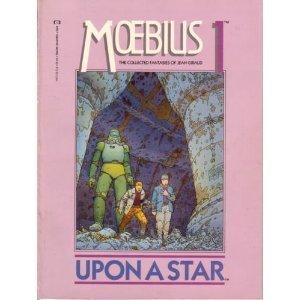#18: RASL volume 1
Storytellers: Jeff Smith
Publisher: Cartoon Books
Year Of Publication: 2009
Page Count (can be approximate or in # of issues format):112 pages
WHAT I LEARNED ABOUT WRITING / STORYTELLING:
Jump right into
the story. This series opens with a man,
bloodied and in tattered clothes, walking down a hillside in the desert. Readers are immediately pulled into this
story by asking where this guy came from, why he’s in such bad shape, and other
similar questions. Done well, as Smith
does here, this can be a very effective way to open a story.
WHAT I LEARNED ABOUT ART / STORYTELLING:
In this science
fiction narrative, Jeff Smith is creating a “lived in, run down” world. With his clean style, he manages to convey
the typical decay of the settings through well-placed marks – scattered dashes
– that mar the pristine white spaces of the page and effectively convey this
rough, genuine quality that was lauded in Star Wars.
RECOMMENDATION: A
NOTES / REVIEW / SYNOPSIS It’s Jeff Smith doing something completely different
from Bone, but it’s still stellar cartooning.
RASL is a time travel story that incorporates the theories of Nikola
Tesla, a love triangle, parallel worlds with parallel versions of many of the
main characters, and a mystery about who is trying to capture Rasl and what
they want him for. Great stuff.
#19: RASL volume 2
Storytellers: Jeff Smith
Publisher: Cartoon Books
Year Of Publication: 2010
Page Count (can be approximate or in # of issues format): 112 pages
WHAT I LEARNED ABOUT WRITING / STORYTELLING:
In volume 1,
Smith used the age-old action cliché of having the villain be a poor shot with
a gun and I thought nothing of it, having seen this trope used myriad times in
film, comics, and TV. But in this
volume, he turns that cliché on its head when the villain confronts our
protagonist again and reveals to Rasl that he missed him on purpose. By doing this, Smith puts that earlier scene
into a far different context, opening up a number of question for the reader (why
did he let him go before? Is he lying now?) while also opening up story
possibilities for the writer.
WHAT I LEARNED ABOUT ART / STORYTELLING:
In a parallel
world, Rasl meets an alternate version of his true love named Uma, and as they
are getting to know each other, in a private viewing at the museum where Uma is
curator, Rasl starts to daydream about his past with the alternate version of
Uma and he tunes her out. Smith conveys
this by having Uma’s word balloons empty, and then he pulls in closer with
successive panels, showing Rasl’s focus on her, until she leans down into the
final panel of the page, where Smith has her face in close-up, and she asks if
he’s even listening to her? I thought
this was a really novel and effective way to convey Rasl’s mental state through
the visuals.
RECOMMENDATION: A
NOTES / REVIEW / SYNOPSIS Smith really knows how to tell a story. As good as this is, I only hope that he will
stick the ending.
#20: RASL volume 3
Storytellers: Jeff Smith
Publisher: Cartoon Books
Year Of Publication: 2011
Page Count (can be approximate or in # of issues format): 112 pages
WHAT I LEARNED ABOUT WRITING / STORYTELLING:
This is a
science fiction story about parallel universes, but Smith utilizes real history
and real science within the narrative – often through flashbacks – to help
ground the story, and it works very well.
The big lesson is, if you’re going to tell a fantastic story try to base
it within some semblance of reality to give readers something to “hold onto”
and allow them to accept the out of this world elements.
WHAT I LEARNED ABOUT ART / STORYTELLING:
In this
penultimate collection, things are starting to get out of Rasl’s control. Time is becoming elastic, and his stress may
be feeding into this. Smith conveys this
with an imaginative two-page spread with multiple images of the Uma drawn over
an imaginative, abstract background.
This works really well for a number of reasons.
One, up to this
point much of the settings and much of the imagery has been relatively
grounded. Allowing for the conceit of time
travel, little else “fantastical” has been seen in the story.
Two, Smith’s
very clean art style has also helped to ground the story, so that when we get
an abstract image such as this two-page spread, it makes a big impact.
Three, similar
to how Moore & Gibbons used the page in Watchmen or Frank Miller used the
page in Dark Knight Returns, this is the first time there’s been a two-page
spread, and one of the few times where there are not multiple panels on a
page. By saving this large canvas for
this important moment, Smith has not diluted the impact and manages to convey
the import of this scene well.
RECOMMENDATION: A
NOTES / REVIEW / SYNOPSIS RASL came from a discussion Smith had with Terry More
and Paul Pope a few years ago. They all
decided to do their science fiction stories.
From that also came Echo from Moore.
Now all I need to get is Battling Boy and that trifecta of creative,
sci-fi, comic book goodness will be complete.
-chris










